
Star Wars Kessel Run
Personnal Research + Technical Development
Pre-Production - Keyframe illustrations for scripted narrative.
Objective
Bellow is a collection of personal artistic explorations completed towards perfecting my understanding of coverage, layout and lenses for scripted narrative storytelling. The exercise focuses on two main areas; first, the choice and style of framing to deliver a story beat, and second the perceptual cues that make the brain understand an image and its content, such as depth, scale and orientation cues.
All Star Wars images bellow were created on Apple’s new Mac Pro 2020, Blender 3D, GPU Rendering Engine Octane (Otoy) and the Adobe Creative Suite.
All color management and final grading was done using the ACES color space on the incredible Apple XDR P3 Pro Display.

“Lost in the woods...”
XXXX

“At last...”
To be continued...
XXXVIV
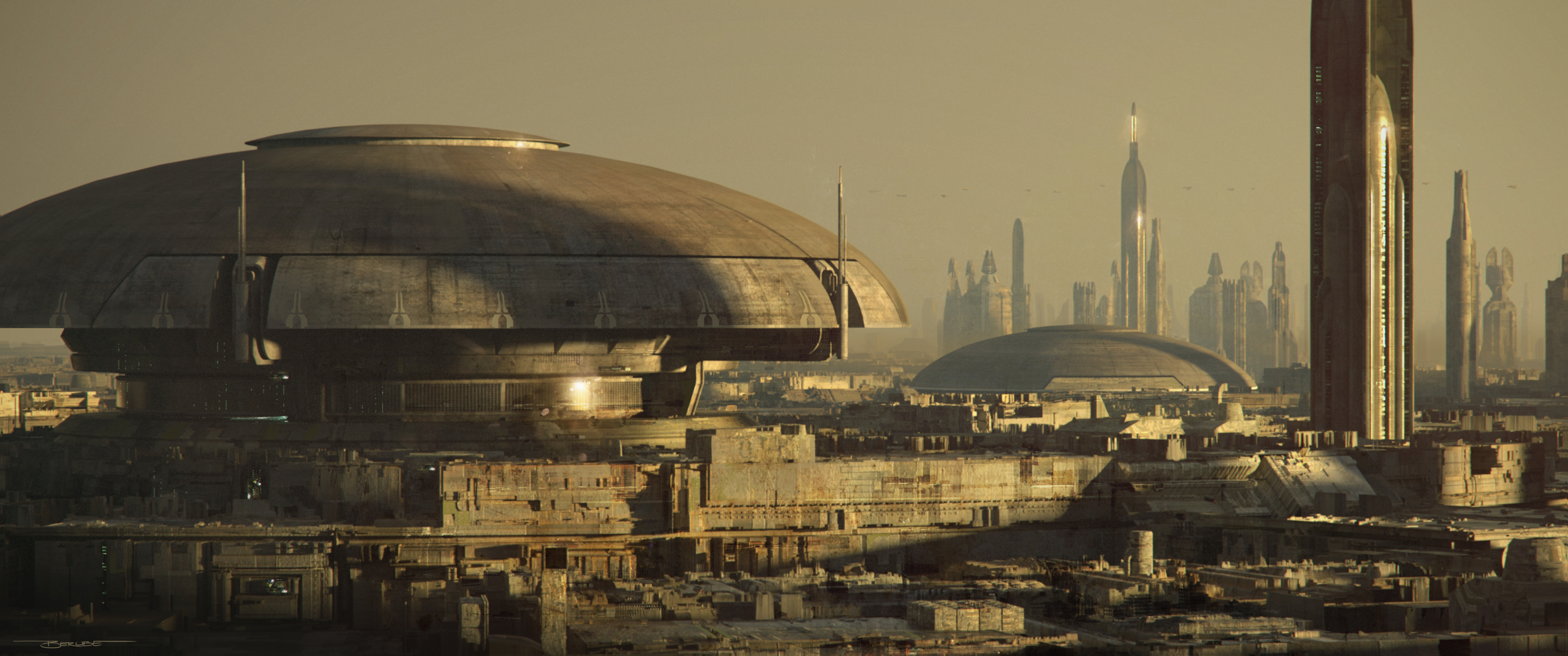
“Something doesn’t feel right”
To be continued...
XXXVIII

“Something doesn’t feel right”
To be continued...
XXXVII

“Something doesn’t feel right”
Now onto the proper reverse shot, almost like a conversational back and forth, this time from the point of view of the city, or tarmac where the x-wing is about to land.
XXXVI

“Permission granted 6-5, welcome home…”
Now that this new setting is established, we cut back to introduce the main character. To do so, a long lens is used to isolate the character, from an observer point of view, suggesting someone watching from the city surface.
XXXV

“Meanwhile, back home…”
As the flacon is about to set foot in the unknown and begin a new scene, we cut back and interlace another location to continue the development of another character’s journey. An establishing shot is used to open the sequence to describe this new setting.
XXXIV

“Into the forest of the unknown…”
We have established in the previous shot where the Falcon is, and what its surrounding looks like. Next we shoot it from the point of view of the environment. The foreground vegetation is almost like an actor, telling the audience about the personality of the place.
XXXIII

“Into the forest of the unknown…”
After an eventful action sequence, we give the pacing a rest and get lost in the forest. Ambiguity, mystery and uncertainty fill the air as we slowly go in deeper to the unknown...
This establsihing shot serves as a showcase of the setting and context of this new sequence and place.
This establsihing shot serves as a showcase of the setting and context of this new sequence and place.
XXXII

“The Flacon comes to a close call and loses the radar dish…”
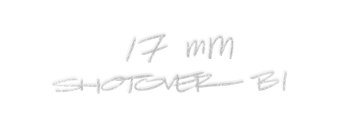
To kickstart the action, a “GoPro” mounted, first hand point of view of the Flacon’s radar dish hitting one the asteroid.
XXVIV

“The Falcon sets in approach for a new chapter…”

The POV sandwhich. This time from the point of view of the Falcon, we experience the asteroid field first hand with a follow cam that echos what its like to navigate the field.
Still keeping the lensing pretty wide as the shot is about the context in which the Falcon finds itself in.
Still keeping the lensing pretty wide as the shot is about the context in which the Falcon finds itself in.
XXVIII

“The Falcon sets in approach for a new chapter…”
Next we move to the opposite side of the setting where we establish the Falcon but from the environment’s point of view.
The chaos of the asteroid field’s choreography gracefully sweeps us back into the second action sequence with its unpredictable parallaxing.
The chaos of the asteroid field’s choreography gracefully sweeps us back into the second action sequence with its unpredictable parallaxing.
XXVII

“The Falcon sets in approach for a new chapter…”

Once again we open on a sequence showcasing who and what is where. Shadows can often be used to convey weight. The Falcon being small and light will contrast the effect nicely to create an illusion of floatation.
Though this is an establsihing shot, the framing was done through an extreme telemetry to accentuate a sense of mass.
Though this is an establsihing shot, the framing was done through an extreme telemetry to accentuate a sense of mass.
XXVI

“The Falcon sets in approach for a new chapter…”

Once again we open on a sequence showcasing who and what is where. Shadows can often be used to convey weight. The Falcon being small and light will contrast the effect nicely to create an illusion of floatation.
Though this is an establsihing shot, the framing was done through an extreme telemetry to accentuate a sense of mass.
Though this is an establsihing shot, the framing was done through an extreme telemetry to accentuate a sense of mass.
XXV
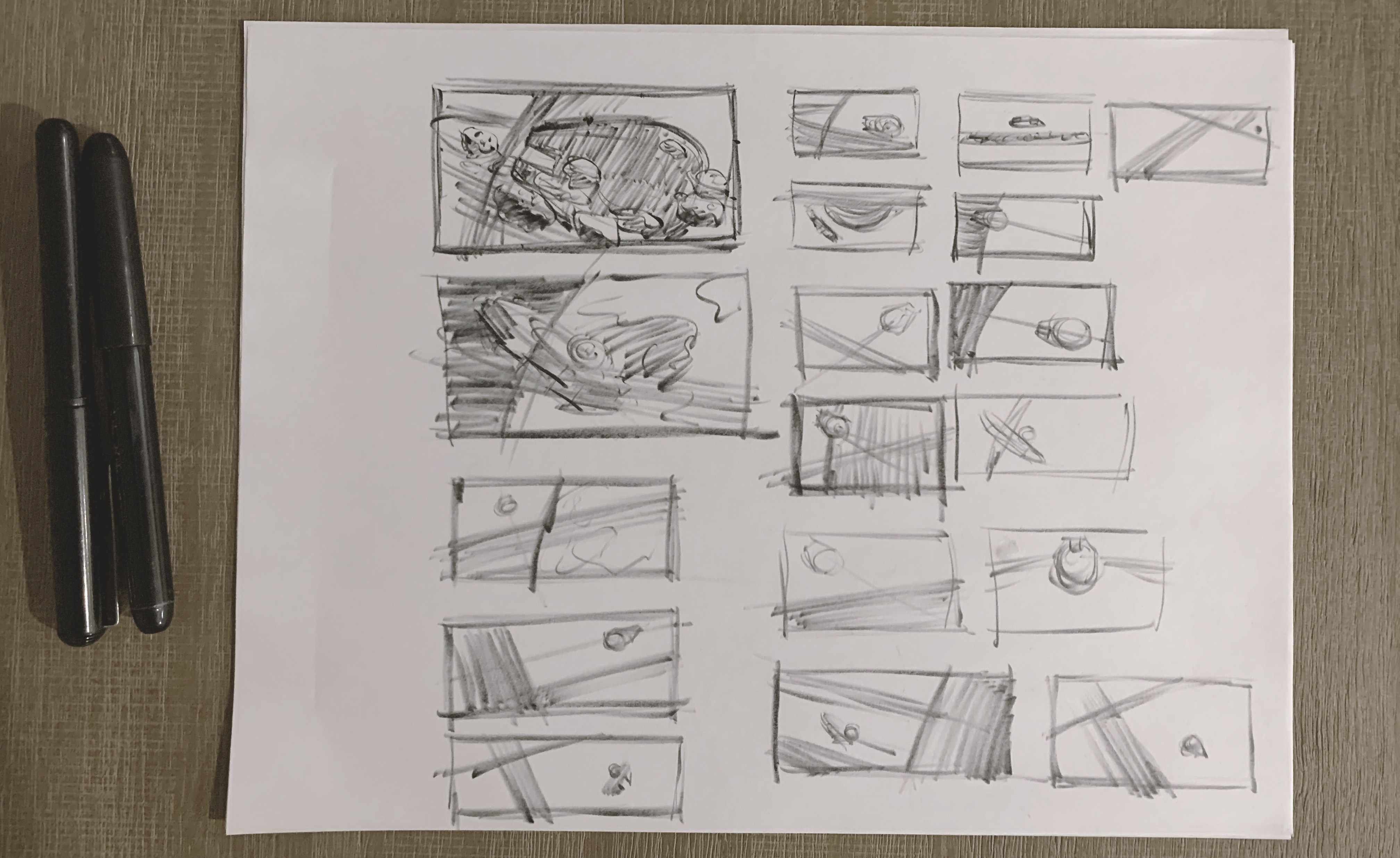
The Middle… Composition
Some shots call for a specific angle or coverage in order for the story to resonate well. Some inserts can afford to be more artistic or graphic for sake of beauty.
For these I tend to revert to graphic design theories to balance the arrangement of elements seen on screen while seeking a composition that is bold and memorable.
Some of my biggest influences for this step are Director Michael Bay, Director James Cameron, Director Steven Spielberg and top Cinematographers; Dion Beebe, Ben Seresin & Amir Mokri.

“The Falcon shoots trough the clouds and set course for...
...To Be Continued.
...To Be Continued.

After the hanger*, one last Hero camera fly by was inserted to finish the sequence with an exclamation point.
To intensify movement and allowing the subject strong screen presence, a medium telemetry was chosen since we still needed to be considerate of the setting, or context.
To intensify movement and allowing the subject strong screen presence, a medium telemetry was chosen since we still needed to be considerate of the setting, or context.
XXIV

“The Falcon shoots trough the clouds and set course for...
...To Be Continued.
...To Be Continued.

After the hanger*, one last Hero camera fly by was inserted to finish the sequence with an exclamation point.
To intensify movement and allowing the subject strong screen presence, a medium telemetry was chosen since we still needed to be considerate of the setting, or context.
To intensify movement and allowing the subject strong screen presence, a medium telemetry was chosen since we still needed to be considerate of the setting, or context.
XXIII

An alternate version from the previous beat, look in the opposite lighting direction.

To complete the sequence, we are back with an establishing shot of a small Falcon exiting the atmosphere with no one in sight behind it.
To accentuate the sense of scale, a higher telemetry was choosen to flatten the curvature of the planet’s horizon to pronounce a contrast in mass.
To accentuate the sense of scale, a higher telemetry was choosen to flatten the curvature of the planet’s horizon to pronounce a contrast in mass.
XXII

“The Falcon shoots trough the clouds and set course for...
...To Be Continued.
...To Be Continued.

To complete the sequence, we are back with an establishing shot of a small Falcon exiting the atmosphere with no one in sight behind it.
To accentuate the sense of scale, a higher telemetry was choosen to flatten the curvature of the planet’s horizon to pronounce a contrast in mass.
To accentuate the sense of scale, a higher telemetry was choosen to flatten the curvature of the planet’s horizon to pronounce a contrast in mass.
XXI


“The Falcon, shooting for the stars, breaks trough the wall of sound during a straight vertical climb...”
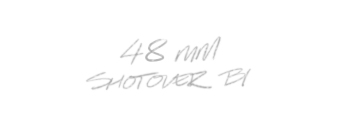
During its vertical ascension, the Flacon breaks the wall of sound to symbolize the rite of passage. Which represents the shedding of a phase, leaving behind the old, while heading off to the new…
XX

“The Tie-Fighters wings plant in the sand after spinning restlessly across the sand.…”
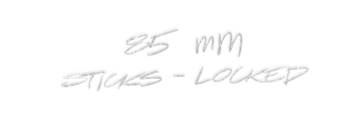
This shot is about accomodating the subject but also its environment. A wide angle lens, framed from up close allows us to capture both.
To communicate the scale of the Tie-Fighter, a slight up angle from a human shooting height was used.
To communicate the scale of the Tie-Fighter, a slight up angle from a human shooting height was used.
XVIV


“The Falcon, emerging victorious from the intense dog-fight shoots straight up for the stars…”

From the point of view of the defeated, we catch one last glimps at the hero leave us behind.
To accentuate the feeling of defeat, the Flacon is framed using exterme telemetry to pronounce the separation between winner and looser.
To accentuate the feeling of defeat, the Flacon is framed using exterme telemetry to pronounce the separation between winner and looser.
XVIII
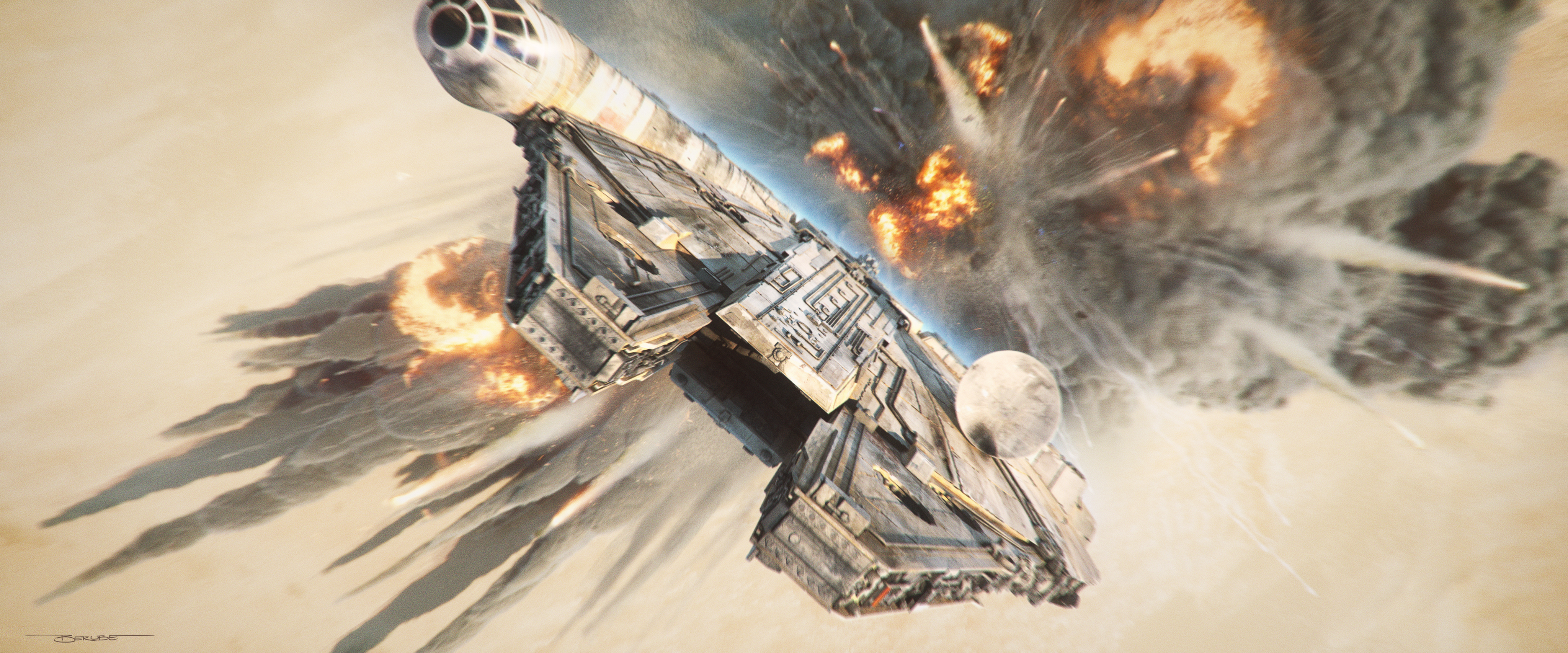
“The Falcon, emerging victorious from the intense dog-fight shoots straight up for the stars…”

A finally “hero shot”, where the winner makes a full frame exit blazing by the camera to claim all attention, as it leaves behind the defeated and its environement.
The composition was framed with an extra wide as we still want to feature the reminesence of the context. The explosion, conlcusion and final state of the Tie-Fighter flying to pieces…
The composition was framed with an extra wide as we still want to feature the reminesence of the context. The explosion, conlcusion and final state of the Tie-Fighter flying to pieces…
XVII


“The Tie-Fighters disintegrates across the land as its parts fly forward with momentum.…”

A good action sequence will call for rapid cuts, and to do rapid cuts, we need coverage, of the same action from multiple points of view to communicate what is taking place through the multiple rapid inserts.
To intensify the action, we accentuate the difference between the elements and the cuts to create drastic contrast. In this case, we follow the subject from the side to showcase the speed at which the parts are traveling against the land, and cut a static camera, with the pieces flying at the screen… being the POV of the land.
To intensify the action, we accentuate the difference between the elements and the cuts to create drastic contrast. In this case, we follow the subject from the side to showcase the speed at which the parts are traveling against the land, and cut a static camera, with the pieces flying at the screen… being the POV of the land.
XVI

“The Tie-Fighters disintegrates across the land as its parts fly forward with momentum.…”

A good action sequence will call for rapid cuts, and to do rapid cuts, we need coverage, of the same action from multiple points of view to communicate what is taking place through the multiple rapid inserts.
To intensify the action, we accentuate the difference between the elements and the cuts to create drastic contrast. In this case, we follow the subject from the side to showcase the speed at which the parts are traveling against the land.
To intensify the action, we accentuate the difference between the elements and the cuts to create drastic contrast. In this case, we follow the subject from the side to showcase the speed at which the parts are traveling against the land.
XV

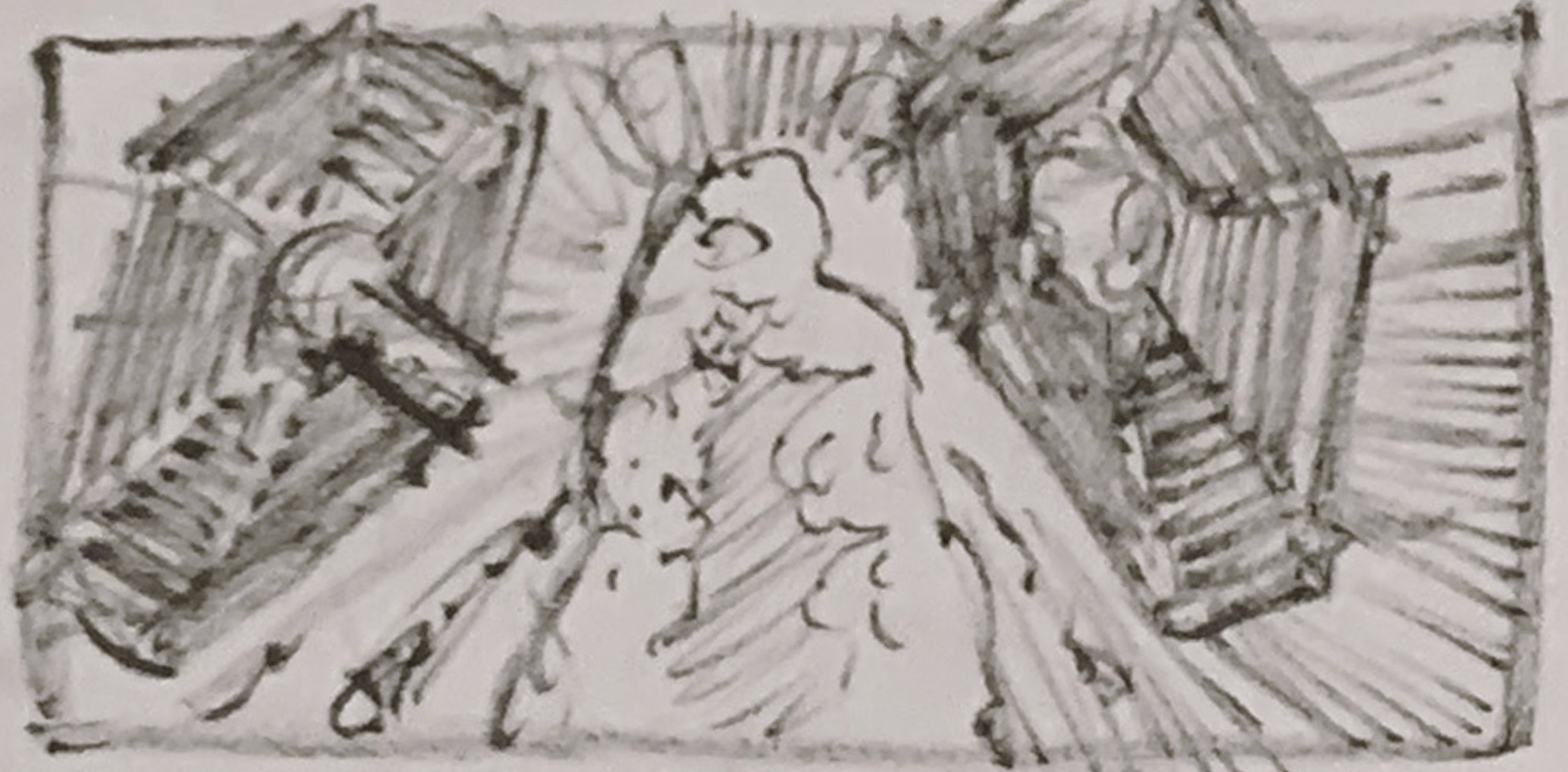
“The dust settles to reveal a small desert rock standing right in the path of the Tie Fighter which ends up flying right through it full speed…”
We are traveling backwards from the rear point of view of the Flacon as we are carrying the forward momentum of the Tie Fighter to accentuate the impact with the non moving rock. Once again, the reaction/consequence shot.
To pronounce the omni directional explosion, we are nice and close with an ultra wide telemetry.
To pronounce the omni directional explosion, we are nice and close with an ultra wide telemetry.
XIV


“The Falcon barely maintaining its lead, aggressively pulls up with an exterme breaking maneuver…”
Though this shot is viewed from the Tie Fighters’ point of view, the camera is moving with the Falcon to accentuate movement and momentum, which we will contrast in the following shot with a sudden stop.
Since the Tie Fighter is a few meters behind, a more compressed telemetry was chosen to devote most screen space to the Falcon and its action, while neglecting paying attention to our surrounding.
Since the Tie Fighter is a few meters behind, a more compressed telemetry was chosen to devote most screen space to the Falcon and its action, while neglecting paying attention to our surrounding.
XII

“The Tie-Fighter, now fully engulfed in the Falcon’s dust trail struggles to keep its course…”

The purpose of this insert is the show the result, or context in which the Tie-Fighter now finds itself in but from its own point of view. Also known as the reaction, or consequence shot.
In order to get nice and personal while still being able to show its context, the insert was shot a wide angle lens from really close.
In order to get nice and personal while still being able to show its context, the insert was shot a wide angle lens from really close.
XI
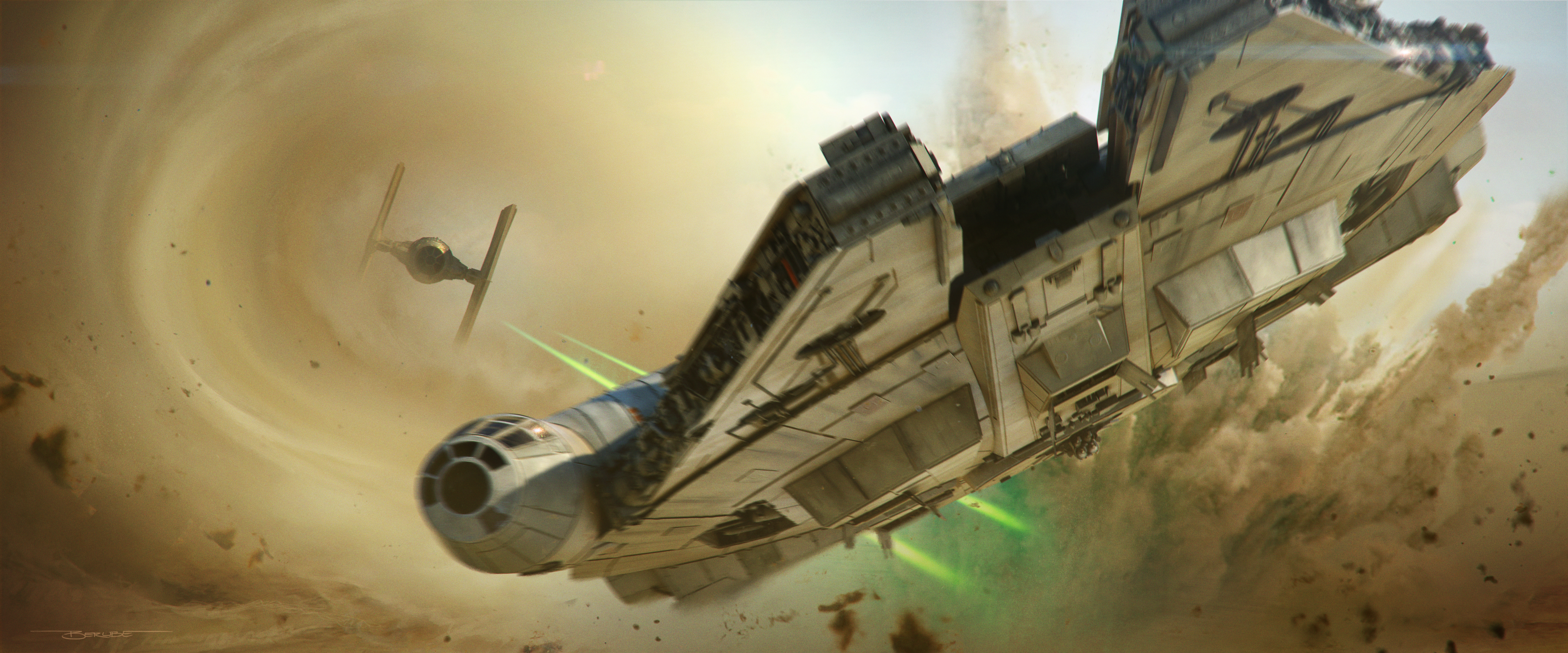
“From the reverse point of view, the Flacon blazes the ground triggering a sand wave engulfing the Tie Fighter.”

This shot is designed to show the context and distance relationship between the two vessels, the dirt blast and the initiation of the sand wave and how it came about.
X

“A Tie Fighter sweeps into frame aggressively blazing the ground, unleashing a gust of laser blasts on the Falcon.”

From the Tie Fighter’s point of view, we now show how close the vessel is to the ground but also the Falcon’s maneuvering which initiates the sand wave.
To accomodate both subjects’ story beat, a more compressed telemetry was chosen to maximize both vessels’ sizes on screen via a compressed stack.
To accomodate both subjects’ story beat, a more compressed telemetry was chosen to maximize both vessels’ sizes on screen via a compressed stack.
IX
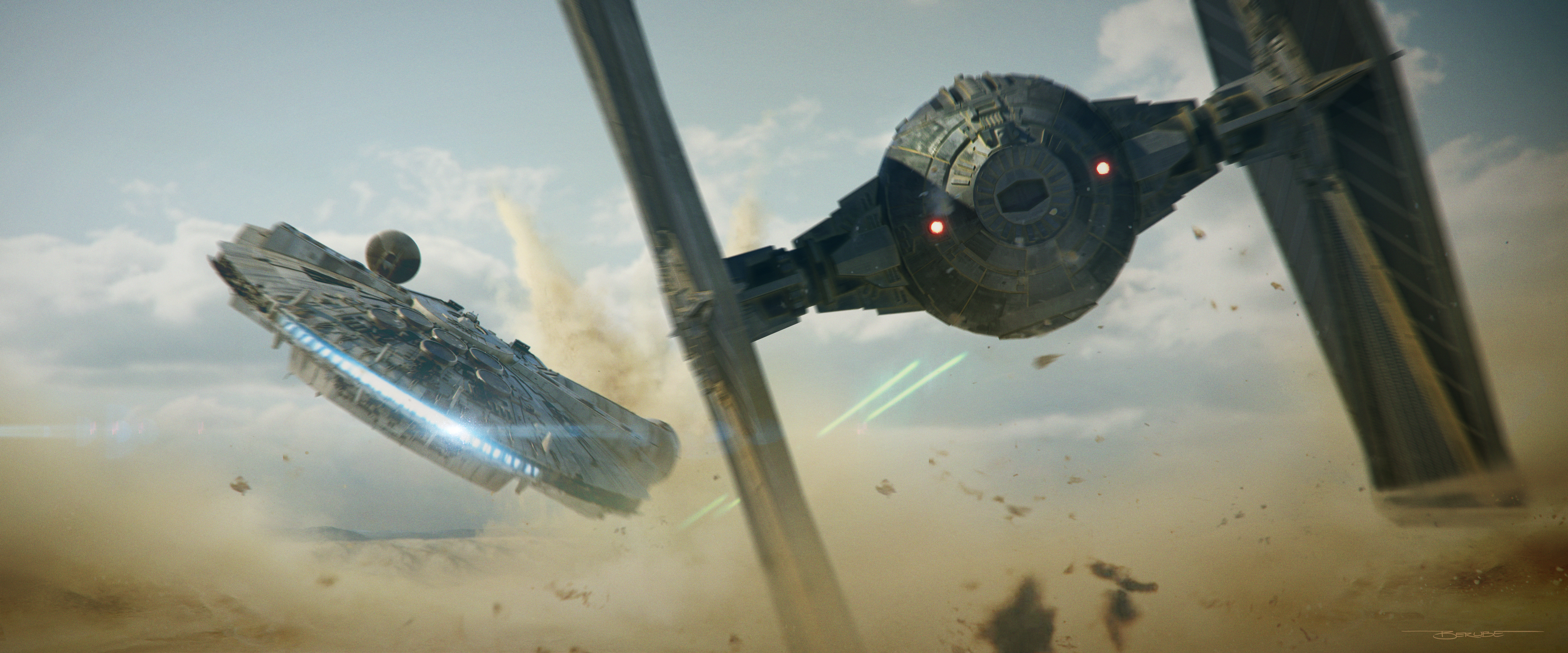
“A Tie Fighter sweeps into frame aggressively blazing the ground, unleashing a gust of laser blasts on the Falcon.”

From the Tie Fighter’s point of view, we now show how close the vessel is to the ground but also the Falcon’s maneuvering which initiates the sand wave.
To accomodate both subjects’ story beat, a more compressed telemetry was chosen to maximize both vessels’ sizes on screen via a compressed stack.
To accomodate both subjects’ story beat, a more compressed telemetry was chosen to maximize both vessels’ sizes on screen via a compressed stack.
VIII

“We open on a vaste desert landscape as a flying vessel splits the ground in halves, leaving behind a tail of dust”

From the Tie Fighter’s point of view, yet to be revealed, we establish the sequence’s context. What is around us, who is where and the overall setting in which the story is about to take place. Also known as “The Establishing shot”.
VII

“The camera blazes the ground as we are flying along with the Falcon on a under belly mounted camera…”

Now from the Falcon’s point of view, we showcase the speed at which the Falcon is traveling, but also how close it is to the ground.
The camera being mounted on the vessel dramatizes the speed relation ship with the ground by eliminating all movement from the subject itself. Also known as “The POV shot”.
The camera being mounted on the vessel dramatizes the speed relation ship with the ground by eliminating all movement from the subject itself. Also known as “The POV shot”.
VI

“In the heat of the distance, the Falcon emerges out of a mirage as a Tie Fighter initiate a dive bomb from above…”

A western movie classic. The long lens locked-off camera, expressing a completely dead still environment. Calm and quiet, in the middle of nowhere where our action is about to unfold.
The stillness of the shot is designed to one, establish the environment and spacial relationship between all parties but also to contrast with the emediate following high octane cut, the Falcon’s POV.
The stillness of the shot is designed to one, establish the environment and spacial relationship between all parties but also to contrast with the emediate following high octane cut, the Falcon’s POV.
V

“The falcon is swinging from side to side, blazing through the canyons just a few feets from the ground while begin shot at …”

This shot is about building intensity, speed and while creating an immersive point of view of the chase. While the Falcon is swinging from side to side, so is the camera, all towards creating movement.
IV

“…The Flacon comes out of a canyon corner ripping through the desert grounds followed by a trail of heavy dust…”

An old James Dean car racing movie classic, the “whip pan” aggressively follows its subject while remaining fixed to the ground. This shot is great to demonstrate the speed at which the subject is traveling through the environment/context.
Great for demonstrating relative motion from the point of view of the peaceful environment versus its subject. This shot could be seen as the reverse point of view of the “follow cam” shot.
Great for demonstrating relative motion from the point of view of the peaceful environment versus its subject. This shot could be seen as the reverse point of view of the “follow cam” shot.
III





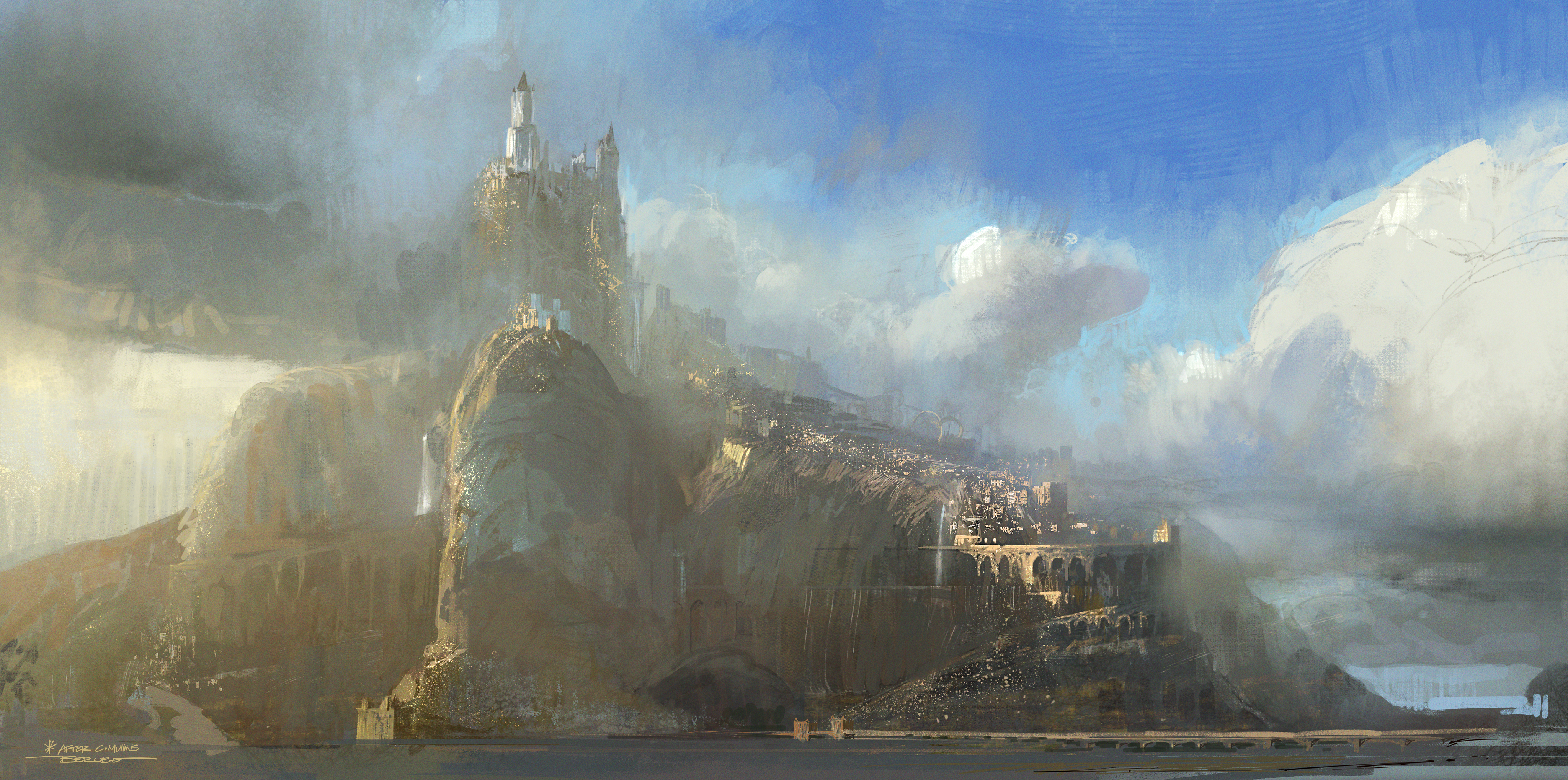


JONATHAN BERUBE
Director + VFX Art Director
Game Trailers / Commercials / Episodics
Director + VFX Art Director
Game Trailers / Commercials / Episodics
REPRESENTATION
For all inquiries regarding Directing Please contact Phillip Detchmendy at Ampersand inc
For all inquiries regarding Directing Please contact Phillip Detchmendy at Ampersand inc